Beginner’s Guide To Paid Social Media Advertising

Introduction
Almost two billion people around the world use social media in their everyday lives. The average person spends around 135 minutes scrolling through social media daily.
Brands and organizations – both big and small – have spotted an opportunity to advertise directly to these users. Using certain techniques they can encourage customers to connect with and communicate with one another.
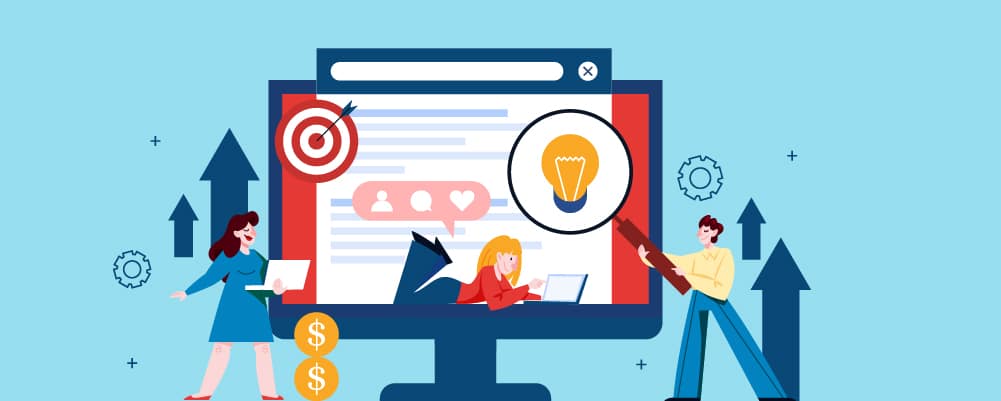
Many well-known platforms are beginning to monetize the data that they collect via paid advertising. From Facebook to newbie social channel TikTok, there are lots of choices out there in terms of biddable media.
And while the opportunities to utilize such platforms are steadily increasing, this means that the market is going to get increasingly more competitive as time goes on. This makes it more difficult to rely solely on organic channels to deliver the type of traffic that you desire.
If you’re even remotely worried about using paid social media advertising or don’t quite understand just how effective and impactful it can be for brand awareness, we’re here to ease your fears.
Table of contents
- Introduction
- What Do We Mean By ‘Paid’ Advertising?
- Why Use Paid Ads?
- Set A Paid Social Media Strategy Objective
- Set A Budget And Timeframe
- Scaling Your Paid Social Media Strategy
- Always Mix Paid with Organic
- Always Update Content
- Know Your Target Audience
- Platforms for Paid Social Media And Their Features
- Using Social Media To Promote Your Presence At A Trade Show
- Building Brand Awareness In The Real World
- Summary
What Do We Mean By ‘Paid’ Advertising?
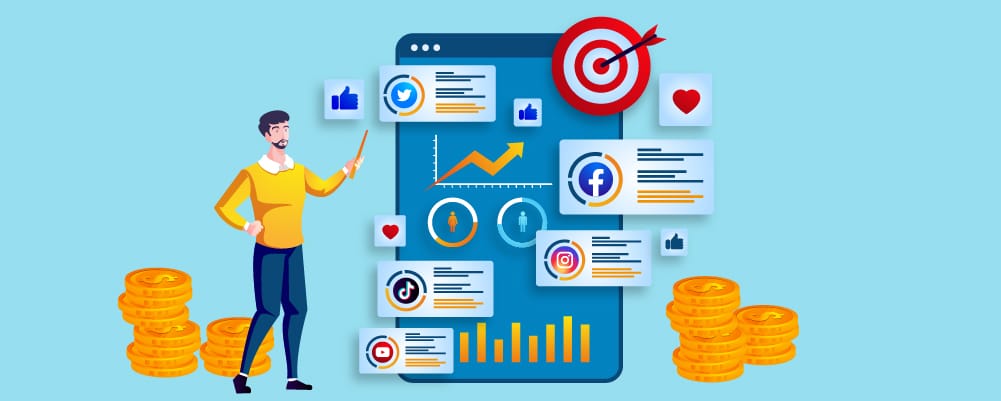
It’s important to establish what ‘advertising’ is. Paid advertising is a way of promoting digital content via advertising on various social media platforms. There are a few types of advertising that you will see most often. These can be split into two main categories:
- Display adverts or ‘banner ads’ that look like stereotypical advertisements. These are generally triggered by someone fitting specific criteria including interests or demographics and are sometimes deemed as being too disruptive.
- Native adverts, or ‘sponsored content,’ usually appear as organic and unique content. These are usually consistent with the platform, page, or format that they appear in.
Paid advertising is an online model that allows advertisers to make bids and participate in real-life auctions to showcase ads in different slots on various networks or platforms. Paid advertising is also referred to as pay-per-click (PPC) advertising as you pay each time somebody clicks on your ads.
This model is usually the preferred option for owned or earned advertising which involves using a platform to push content for free, including LinkedIn or Facebook posts.
Why Use Paid Ads?
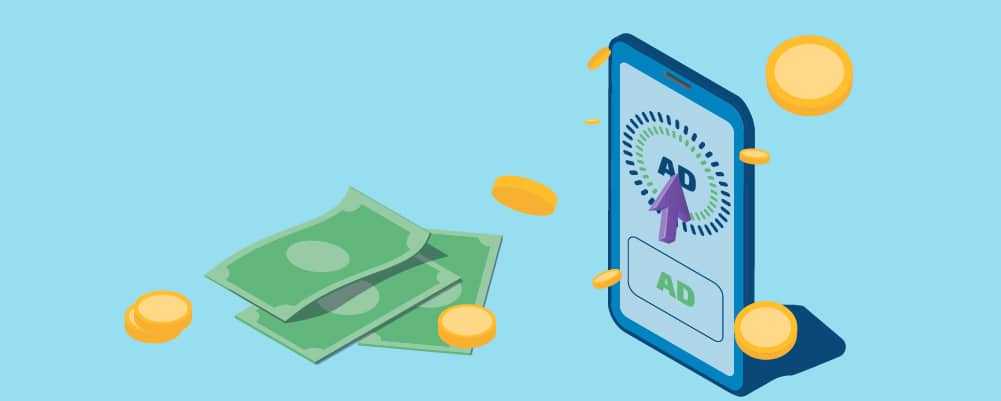
There are several main reasons why using paid ads might be best for your business. We have touched on some of these below.
Paid Helps You Reach New Audiences

Paid advertising takes your content far above your immediate community. Essentially, paid ads to help you to increase brand awareness by allowing you to demonstrate what you and your company stand for to a defined audience.
It also provides you with the necessary tools to target a niche audience based on core demographics such as location, age, and general interests.
Paid social media advertising will also help you to elevate your brand to gain more traction and qualified leads, and may even improve the digital presence of your brand!
Good Value For Money

Advertising on social media is an extremely cost-effective formula that is typically used in place of traditional advertising techniques such as print advertising, television, and radio.
The greatest part about using paid ads is that you only pay the publisher when a user lands directly onto your website – making it excellent value for money. This is also known as the pay-per-click (PPC) payment model.
Using this model prevents any advertiser from investing their money and using their budget for campaigns that cannot be measured in a quantifiable way.
Better Engagement

The more you use and familiarize yourself with social media, the better your understanding will be of what is resonating and working in terms of your followers. Engagement is a key metric you must keep in mind to achieve this.
Looking at the engagement rate gives you the tools to see whether your followers are engaging with your content or not. It also enables you to analyze trends in your posts and then re-use the content with the most hits.
Using paid social media advertising is also an excellent way to ensure your brand and all of the content you produce remains at the forefront of your audience’s thoughts. This applies to both existing and new followers.
The fact that social media content can come in a variety of forms including videos, stories, images, or witty copy helps to ensure that all content is engaging and digestible.
Effective
Paid advertising can give content a lot of reaches and will ensure that your ads are seen by your relevant audience. This type of advertising is a useful channel that will help you to target relevant audiences and generate leads all at the same time.
The majority of social media platforms will enable users to utilize interest-based targeting to guarantee that ads reach the individuals who are interested in the content you are making. You can also reach out to customers who may not be entirely familiar with your brand but have an interest in the product or service that you are offering.
Better Sales
Social media advertising has the power to steer users toward deals that they would likely click on in their own time. This makes the reality of making a sale (impulsive or not) much higher than you might expect. It is up to you to channel such impulses of your customers for more effective sales.
Set A Paid Social Media Strategy Objective

Setting an objective for your paid social media strategy provides your tactics with a direction to go in and a specific outcome to achieve. You can imagine this type of strategy much like a road trip: you begin the journey at home with a set goal of arriving at your destination in plenty of time.
Consider Your Audience
All paid social media ads work similarly. The audience that you establish will begin their journey with your brand after seeing a relevant advertisement on their feed, and your goal is to encourage them to the final destination.
In this instance, a destination could be an email subscription form, a website, or even any of your social media pages in general.
If you’d like to establish where your audience is beginning their journey, you will want to use settings, filters, and additional criteria to minimize your target audience. Again, this is where you must consider core demographics like hobbies, age, occupation, and even location (physical or not).
Define The Destination
The next thing you need to do is figure out where the destination is. The different social media ad platforms have different conversion tools, but the final goal remains the same – encourage your customers to share contact information with you and your business.
This can be done by asking them to fill in some information or even visit a website landing page. The right way of doing this depends on the needs of your business.
Set A Budget And Timeframe

Paid social media advertising is a relatively inexpensive way of advertising a product or service in the current digital market. These types of channels are highly flexible and can be tailored just to attract the audience you truly need for your business.
Simply, using this method of advertising means you only pay for individuals you have the full ability to reach.
Unlike radio or TV advertising which differ in price depending on the time that the ads will air and the length of the spot, social media ads are priced a little differently. This depends on the prospective number of impressions that you will be making using your ads and the overall length of the campaign.
Using this method gives these ads a favorable KPI for you to track (the cost per acquisition) versus more traditional ads that track your cost per million impressions.
Paid social media adverts could start for as little as a few dollars thanks to the lottery system or bidding model that various platforms use to push ads onto a user’s newsfeed. But don’t worry – limits can be implemented so that you don’t go over your spending budget!
Make sure to keep track of your credit card balance. Campaigns will cease the second that your money runs out, meaning a loss of momentum in your campaign. To combat this issue before it can arise, you should think about raising the amount on your card or even implement a much lower daily spending limit.
Scaling Your Paid Social Media Strategy

Whenever you put any type of money behind a social media campaign, you’ll need a good return on investment (ROI) to showcase the effectiveness of the effort, budget, and resources that you implemented throughout. This will enable you to scale future campaigns.
Social media platforms like Twitter, Facebook, LinkedIn, and Instagram offer analytics and reporting for specific campaigns. But if you were to push a campaign across various social media sites at once things can become confusing very quickly!
Always Mix Paid with Organic
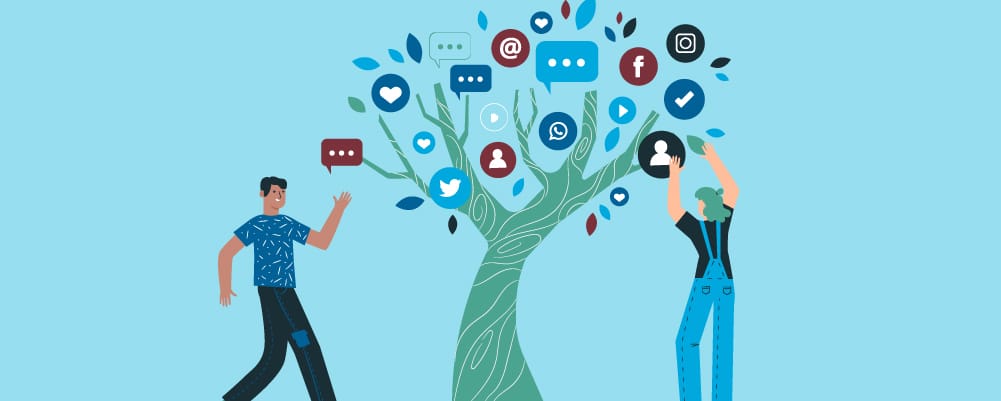
Organic social media traffic can take a couple of days to build thanks to the algorithms that are at work behind the scenes. If you are operating a short-term campaign then this time could cost you in terms of your leads and visibility.
Paid social media, on the other hand, gives your campaign a boost of speed that organic posting just cannot offer. As well as sustaining traffic, engagement, and views for as long as you can afford it, you can achieve an advertising frequency within your control.
If you overwhelm users with lots of ads it’ll likely just result in their irritation and may spell an unhappy ending for your brand. So, instead of curating content that is repetitive, flashy, or downright dramatic, you should take the time to create something interesting and attractive for your customers.
Always Update Content

Make sure to stay on top of your content. Never allow your ads to become boring or stale as this could reflect badly on your approach to business. Monitor your performance and ensure that you are adjusting your content regularly to keep up with the demand.
You could start by frequently updating the following types of content:
- Ad copy
- Creative
- Your landing pages
And remember, up-to-date and reliable content will provide you with more traffic! It will also help to build some trust between you and your customers or enhance the trust that is already there.
Know Your Target Audience

Whether you’re wanting to attract new customers or reach out to current ones, identifying exactly who you are looking to target to achieve your goals is very important. You must also figure out whether you have different audiences for each of your goals.
- Lookalike Audiences are created to mimic demographics from the seed audience that you provide. These could include valuable customers, event attendees, or email non-responders. You can find these on Facebook and sometimes on LinkedIn.
- Persona Audiences is where you can target audiences using unique data generated by the engine.
- Retargeting is readily available on all well-known social media platforms. Retargeting consists of marketing to a familiar audience who has already engaged with your brand via an ad or an app.
Platforms for Paid Social Media And Their Features

Paid social media platforms each have unique features that set them apart from their competitors. But there are three crucial characteristics that you will need to look out for: easy access to lead capture forms, space for persuasive ad copy, and lots of visual content.
The first thing you must do, however, is select the platform that will best work with your campaign. Begin by considering the type of audience you are looking to attract and then figure out your targeting capabilities and the criteria relating to the platform.

Simply put, Facebook is a great platform to use if you are looking to use paid social media ads. While different social media platforms will offer unique features to help you on your way to reaching more of your target audience, there’s something quite special about Facebook.
It’s always a good idea to utilize all of the tools at your disposal, which Facebook has in abundance. Notably, you must use Facebook Targeted Ads, which is a robust ad platform that runs on a bidding system. This is where advertisers bid on ads that are based on their target audience.
This bid will then be put into a lottery for a chance to be showcased directly to this audience. Facebook ads are pretty unique as they can narrow down the data to only a few hundred people based on specific criteria like interests and geography.
This type of data might not be the most beneficial for larger corporations yet it could make all the difference to a smaller business.
Facebook Ads are also useful in generating brand awareness and building new leads. One of the most useful things is that you can try out many ad formats to figure out the one that best resonates with your audience in terms of your campaign.

Paid ads on Twitter are far more subtle than on Facebook and are often deemed to be more effective, too. Sponsored content looks identical to regular content, and it can sometimes be difficult to distinguish between the two.
In terms of marketing, this is a great feature. It means that more people will be looking at your ads as they aren’t as “in your face” as they would be on various other social media channels.
Twitter Ads have impeccable reach. There are over 192 million daily users of the app which demonstrates the full scope of your advertisements’ reach. Plus, when using Twitter’s Ad software, you have the tools to tailor your ad to a specific demographic.
Twitter is specifically great for launching products, increasing brand awareness, and driving platform traffic.
Remember that context is always as important as the content that you post. For instance, the same things you would post to your followers on Facebook or Instagram likely won’t elicit the same type of response from your Twitter consumers!

Around 84% of Instagram users discover new products while using the social media channel. This has risen almost 20% over the last five years. With such significant growth, it isn’t a terrible idea to pay for a spot in the platform’s whole advertising reach.
You will need a business profile to run ads using Instagram. As Instagram is such an effective tool for eCommerce, you can set up your store directly on the app, which is especially convenient if you are trying eCommerce for the first time.
With Instagram Ads, you can select a budget that best works for you – starting from only a couple of dollars. However, this amount depends on the size of your target audience and the general timeline of the campaign.
And, because Facebook owns Instagram, you will be running your ads simultaneously on both of these platforms. You will be able to manage them from your Facebook account.
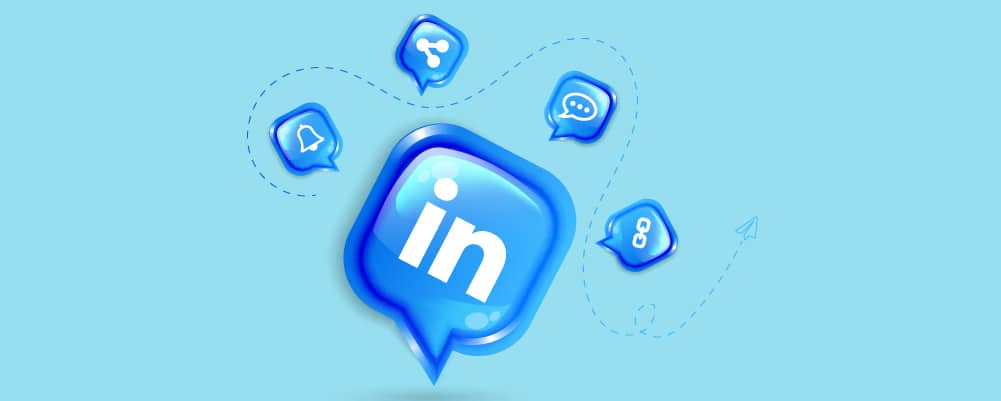
LinkedIn is an excellent channel for budding or working professionals to form connections, keep an eye out for their dream role, generate leads, or a mixture of all three. You can reach thousands of people operating within your industry in little to no time at all, including key decision-makers, hiring managers, and even thought leaders.
LinkedIn allows marketers to reach such individuals on behalf of the business that they are operating. It is also an optimal channel for all types of B2B advertising.
It’s important to note that LinkedIn has a varied number of working professionals using the app at any given time. Four out of five of these professionals will drive business decisions.
Users on LinkedIn are seeking solutions. Simply being there and having a willingness to resolve problems will go a long way in terms of increasing your brand visibility.
TikTok

As one of the fastest-growing and most influential social media platforms in the entire world, TikTok is every marketer’s dream. Users can share short videos about practically any topic and can decorate the video with music and filters of their choice that is unique to the app itself.
TikTok is fun. Paid content is quite easy to distinguish on the app yet it is not entirely off-putting as users can simply scroll past it if it is not relevant to their interests. However, if it is something they need or want to know more about, the scope of reach the app has can be monumental!
The audience is everything. An influx of tailored content is a large reason why this particular social media channel resonates with so many people. TikTok advertising pushes you to the forefront of a marketplace packed full with the potential of reaching millions of relevant people at any given time.
The promotion feature on the app isn’t guaranteed to be profitable if you solely use TikTok and don’t have other social media channels or a website to use in conjunction. However, if you play your cards right, this tool could be all you need to see significant success!
Using Social Media To Promote Your Presence At A Trade Show

Trade shows are in-person events that typically bring large groups of people or companies together in a particular industry or profession, provide a safe space to network, and also show off any new products.
Therefore integrating social media into your trade show plan is a great way to enhance your company’s presence at the event. There are a few key things you can do before you go to a trade show. This includes:
- Look For Official Hashtags
Finding out any official hashtags is a great beginner step in promoting your presence at a trade show. Check the official social media accounts of the trade show and follow relevant hashtags for a couple of weeks before to connect with key players and learn important trends.
You can then use the hashtags to promote your presence at the show. You might want to think about making a hashtag that is specific to your campaign or company.
- Create Fun And Unique Content
At trade shows, it’s quite common to see new services or products being introduced. If you want to do the same then you can create the individual content that you can share before you attend the show.
For example, you can begin by creating a teaser video (of any length) on platforms like Vimeo or YouTube to then share with your audience.
- Use LinkedIn Connections
If you have LinkedIn connections you’d like to extend a personal invitation to for lunch or simply attend your booth, a trade show is a perfect opportunity! Feel free to send them a personal message and request to connect during the event. If they have a big following then this could prove to be a beneficial decision for you and your business.
- Connect With Industry Professionals
Similarly, you must connect with specific contacts in your industry via LinkedIn or Twitter. Ask them to take a few minutes to stop at your booth to view new products, write a post about your services, or even attend a seminar that you may be speaking at.
If you have strong contacts in the press then utilizing your connections will also be a great way to promote your presence at a trade show. They can tweet and write about specific story ideas.
- Keep Your Followers In The Know
Making sure your followers are kept up-to-date with everything you will be doing at the trade show is critical. If your company is having a speaker at the show or is sponsoring an event, it’s a great idea to promote this involvement to your followers way ahead of time so that they know what is going on.
Building Brand Awareness In The Real World
Whether you are simply putting out good content or using influencers or referrals, social media has become a key way of boosting brand awareness in the real world.
This is because it has become the greatest channel for any type of brand to maintain relationships with customers while having the chance to be found by new leads, which generates more awareness of the brand in the long run.
There is no better way to make an impact in the digital age than using social media campaigns for real-world event marketing. This is because they engage and encourage individuals to talk.
A Real-Life Example
One core example comes from a largely digital-based brand known as Refinery29. Their experiential approach to event marketing has helped to provoke, challenge, and also convert their audience into loyal customers of the brand.
Refinery29 is an entertainment website and lifestyle brand concerned with discovering innovative and creative ways to market itself to an audience.
As of 2022, Refinery29 is responsible for many major social media trends but is most well-known for its annual event called ‘29Rooms.’ This is an artistic wonderland that features 29 connected interactive rooms with different themes designed by local creative individuals.
This event concept changes each year but generally works by the company requesting that attendees transform the rooms into art. In many of these events in previous years, one of these rooms features a blank wall for individuals to write to their inner child.
Essentially, with this event, customers can immerse themselves in the fun of the event and learn more about the core values of the brand as they go. This is an efficient way to ensure brand awareness.
Advertising Techniques
Event marketing plans and techniques differ between brands. Every event is different – alongside each target audience, budget, and production schedule. Simply put, there’s no one-size-fits-all solution!
As a digital brand, Refinery29 relies heavily on relevant digital formats. However, for 29Rooms, the brand email is a key component in building and maintaining brand awareness and engaging their audience.
There are, however, several key types of advertising that companies must consider during these events. We have listed these below:
Pre-show advertising for this type of event includes interactive social media posts across all social media channels.
- A lot of their promotional content is centralized on Instagram and Facebook which have the greatest immediate reach for their target audience.
- Social media posts tend to feature customers and members of the Refinery29 team inside the event (captured during previous years) or digital posters that advertise the event. Both of these drive interest and capture interest and create a community for the event.
- Refinery29 also utilize email marketing to promote their event for users signed up to receive relevant communications.
Daily media posting at the show is an excellent way for Refinery29 to boost brand awareness. Daily posting of photographs and relevant information not only keeps the digital audience engaged but also draws more attention to the Refinery29 brand and the amazing things they are offering at their 29Rooms event.
Post-show follow-ups are vital for any type of event marketing, but especially ones as unique as 29Rooms. You must immediately follow up with stakeholders, sponsors, and attendees via satisfaction surveys and proving promised post-event content to get their honest opinion about the brand and the event itself while it is fresh in their minds. It’s also a great way to keep the conversation going about the company.
Summary

Hopefully, after reading this article, you now have a greater understanding of what paid social media advertising is, how it works, and the overall effectiveness of the concept in terms of promoting a particular service or product to a wider target audience.
Paid social media advertising is an essential part of guaranteeing brand awareness and loyalty. And if a company truly wants to find success in our current digital age, it must keep its name fresh in the mind of people all around the world.
So, if you’re seeking ways to promote a campaign that will enable you to grow your company more organically – and you’re looking to see instant results – you should turn your attention to adapting paid social media advertising into your brand strategy.
As billions of people use core social media platforms daily, paid social media advertising is a key tool that helps to keep several companies relevant in such a wide market space.
